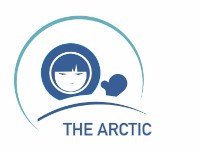Remote part of northern Canada – Nunavut, is divided into three administrative regions, stretching from east to west, including Qikiqtaaluk, Kivalliq and Kitikmeot. English and French, Inuktitut and Inuinnaqtun are the official languages of the territory, however only about 70% of Nunavummiut, use Inuktitut as the first language.
The Baffin region (Qikiqtaaluk) greatly consists of Akimiski Island, Amund Ringnes Island, Axel Heiberg Island, Baffin Island, Bathurst Island, the Belcher Islands, Bylot Island, Cornwallis Island, Devon Island, Ellef Ringnes Island, Ellesmere Island, Mansel Island and Prince Charles Island. The Melville Peninsula, the northern parts of Prince of Wales Island and the Somerset Island are also parts of the region with the headquarters set in Iqaluit which is also the capital city of the Nunavut territory and the largest community in this part of Canada.
The Kivalliq region includes some portions of the mainland Canada, in particular, the territories west of Hudson Bay, Coats Island and the Southampton Island. The regional capital is located in Rankin Inlet.
The third main region of Nunavut – Kitikmeot, stretches from eastern to southern parts of Victoria Island, through the mainland of Boothia Peninsula and the King William Island with the southern part of Prince of Wales Island. The main town for the region with administrative bodies in located in Cambridge Bay.
Arctic flora and fauna are highly presentable in the northern Canadian territory and many birds feathers flock to get there. Polar bears, belugas, musk ox and bowheads are just the example representatives of the Nunavut wildlife. Caribou seems to be the most important for the indigenous Arctic communities as it has been hunted for food, clothing, shelter and tools by the northern population for centuries. There are more than 750,000 living in Nunavut.
Nunavut is the home for more than hundred species of birds, however almost all of them are the migratory species from which only ptarmigan, the raven and snowy owl spend the winter in the Canadian North.
The region offers tracts of protected areas, where birds and wildlife sanctuaries are located and can be admired, including Auyuittuq, Quttinirpaaq, Sirmilik and Iqalugaarjuup Nunanga National Parks.
The true Arctic can be seen in Nunavut through Inuit eyes. Their culture includes their traditions, beliefs, language, the way of life and it consists of arts, music, handcrafts, food and clothing.
One way of getting to the northern Canada from various parts of the world, is on deluxe icebreaker. Sailing season for cruise ships starts in July and runs through the summer until almost the end of September. As the ice cap melts successfully and the summer season gets longer, the possibility for travelling to northern, remote parts of Canadian communities might soon be the opportunity.
Northwest Passage is being greatly in use for tourism opportunity and provides with the destinations of Cambridge Bay, Goya Haven, Pond and Resolute.
Permanently scheduled cruise departures from Iqaluit sail through the eastern coastline of the Baffin Island and end up Pond Inlet, Cornwallis Island or cape Dorset. More of the cruise destinations are available in our interactive data mapping system. The small ship and
There are three airlines currently operating from Iqaluit, offering non - stop flights to ten Canadian cities. As for now, there are no international connections directly from Nunavut. Domestic flights possibilities can be seen in our interactive data mapping system.
Source: Tourism in the Polar Regions








